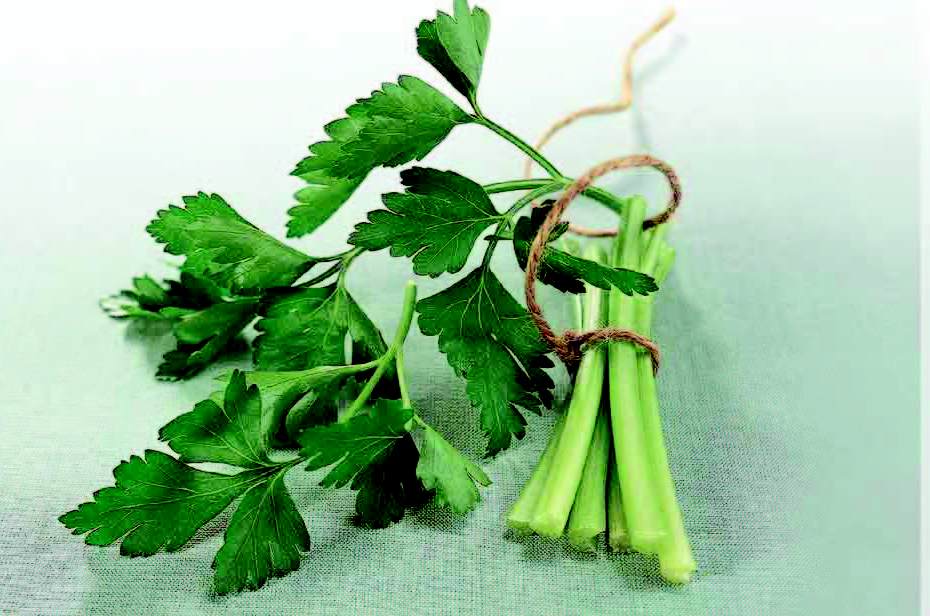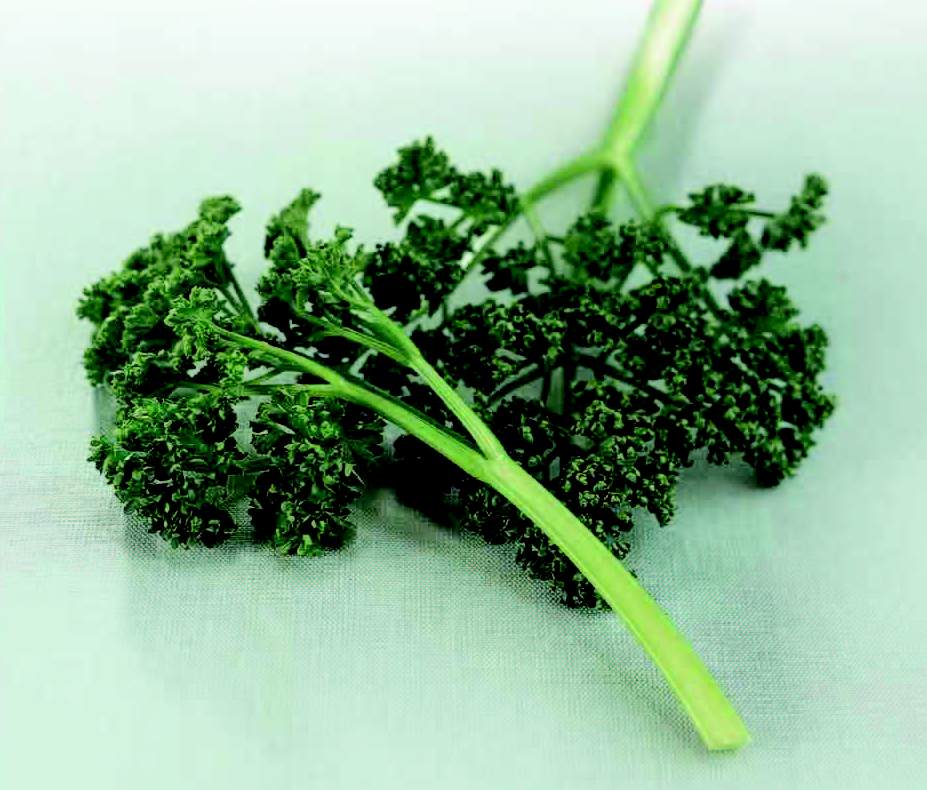Petroselinum crispum
Culinary uses
Parsley is liked for its clean, fresh taste and is rich in iron and vitamins A and C. It is used in sauces, salads, stuffings, and omelettes in many parts of the world. In Anglo-Saxon cultures its use as a flavoring ingredient (except in a parsley sauce) rather than simply as a garnish is quite recent. Add chopped parsley at the end of cooking time for a fresh flavor. Sprigs of dark green, deep- fried curly parsley make an excellent garnish for fried fish. Parsley root is used in soups and stews, but it can also be blanched and then roasted or cooked in other ways as a root vegetable. It mashes well with potatoes.
TASTING NOTES
Parsley has a lightly spicy aroma with hints of anise and lemon; its taste is tangy and herbaceous, and has a light, peppery note. Flat-leaf parsley has a more persistent and finer flavor than curly parsley and a finer texture. Both bring out the flavors of other seasonings.
PARTS USED
Fresh leaves are the most used, but stems are good for flavoring stocks; parsley root is grown for its roots
BUYING / STORING
Buy a pot of parsley for your windowsill; or buy a bunch, wrap it in plastic, and store it in the refrigerator. Discard any sprigs that look slimy and it should keep for 4–5 days. Parsley can be chopped and frozen in small containers or in ice cube trays with a little water. Don’t buy dried parsley.
GROW YOUR OWN
Parsley seeds take some weeks to germinate, but soaking them overnight in hot water helps speed up the process. Sow in the ground, and thin seedlings when they are big enough. Sow seeds every year, so that when one batch goes to seed in its second year a new batch is ready to use. Harvest from late spring.
Flat-leaf parsley
Curly parsley P. crispum

Good for garnishes, curly parsley also gives a light, herbaceous flavor and an attractive green color to mayonnaise and other sauces.
Stems
Parsley stems are coarser in flavor than the leaves. Tie them in a bundle and use in long-cooked stocks and stews; discard the stems when cooking is completed
Curly parsley P. crispum

Good for garnishes, curly parsley also gives a light, herbaceous flavor and an attractive green color to mayonnaise and other sauces.
FLAVOR PAIRINGS
Essential to a number of traditional flavoring mixtures: French bouquets garnis, fines herbes, and persillade; Italian gremolata and salsa verde; Lebanese tabbouleh. Good with eggs, fish, lemon, lentils, rice, tomatoes, most vegetables. Combines well with basil, bay, capers, chervil, chile, chives, garlic, lemon balm, marjoram, mint, oregano, pepper, rosemary, sorrel, sumac, tarragon.
Probably the only herb considered indispensable by most Western cooks, parsley is a truly versatile biennial, native to the eastern Mediterranean region. Today it is cultivated throughout most of the temperate world. Parsley root, which is valued for its root rather than its leaves, was first grown in Germany in the 16th century.
Parsley root
P. c. var. tuberosum

Mostly cultivated in central and northern Europe, parsley root, also called Hamburg parsley, is no more difficult to grow than leaf parsley. It looks like a small parsnip or, if round, a turnip. Its flavor combines those of parsley and celery, with a light nuttiness. The leaves have a coarse flavor and texture.

